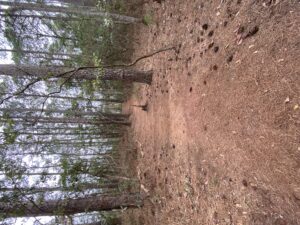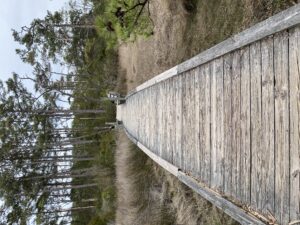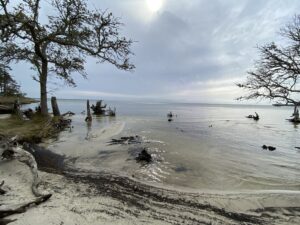A Walk in the Woods
go.ncsu.edu/readext?997089
en Español / em Português
El inglés es el idioma de control de esta página. En la medida en que haya algún conflicto entre la traducción al inglés y la traducción, el inglés prevalece.
Al hacer clic en el enlace de traducción se activa un servicio de traducción gratuito para convertir la página al español. Al igual que con cualquier traducción por Internet, la conversión no es sensible al contexto y puede que no traduzca el texto en su significado original. NC State Extension no garantiza la exactitud del texto traducido. Por favor, tenga en cuenta que algunas aplicaciones y/o servicios pueden no funcionar como se espera cuando se traducen.
Português
Inglês é o idioma de controle desta página. Na medida que haja algum conflito entre o texto original em Inglês e a tradução, o Inglês prevalece.
Ao clicar no link de tradução, um serviço gratuito de tradução será ativado para converter a página para o Português. Como em qualquer tradução pela internet, a conversão não é sensivel ao contexto e pode não ocorrer a tradução para o significado orginal. O serviço de Extensão da Carolina do Norte (NC State Extension) não garante a exatidão do texto traduzido. Por favor, observe que algumas funções ou serviços podem não funcionar como esperado após a tradução.
English
English is the controlling language of this page. To the extent there is any conflict between the English text and the translation, English controls.
Clicking on the translation link activates a free translation service to convert the page to Spanish. As with any Internet translation, the conversion is not context-sensitive and may not translate the text to its original meaning. NC State Extension does not guarantee the accuracy of the translated text. Please note that some applications and/or services may not function as expected when translated.
Collapse ▲Riddle me this: What is at the beach, but not the beach? Like the mountains, but not the mountains? And closer than you think? Give up? Nags Head Woods Preserve. On the off chance that you tire of the relentless beauty of white sandy beaches and the glistening aquamarine ocean and desire a change of scenery, in mere minutes you can transport yourself to a woodland trail, pine straw underfoot, breathing in the earthy, green aroma of a maritime forest, right here on the Outer Banks.
We headed out on the Roanoke Trail, a 1.5-mile round-trip hike, categorized as a “moderate” level of difficulty. We passed ponds covered in glowing green duck weed (a favorite snack for ducks, other birds, fish, and turtles) and were surrounded by statuesque pines, magnolias, wax myrtles, and hollies. We were cheered by the sight of sunny yellow Carolina Jessamine vining its way around a fallen tree. And we were taken aback by what we initially thought was an alligator but upon closer inspection proved to be a particularly intricate jumble of roots.
From tall pines to tiny orchids, over 550 species of plants have been documented at Nags Head Woods. Ruby-Crowned Kinglets, Black-Throated Blue Warblers, Marbled Salamanders, and Ground Skink lizards make up the more than 150 species of birds and over 50 species of amphibians and reptiles found there. Informative placards are placed along the trail and yes, we did see one alerting us to the existence of water moccasins and rattlesnakes. On that day, however, the reptiles were evidently engaged in more exciting reptilian pursuits, which thankfully kept them out of sight. What we did encounter, though, was a sense of pure peacefulness. Each quiet step released a feeling of having been removed from the world, albeit temporarily. Woodland bliss.









